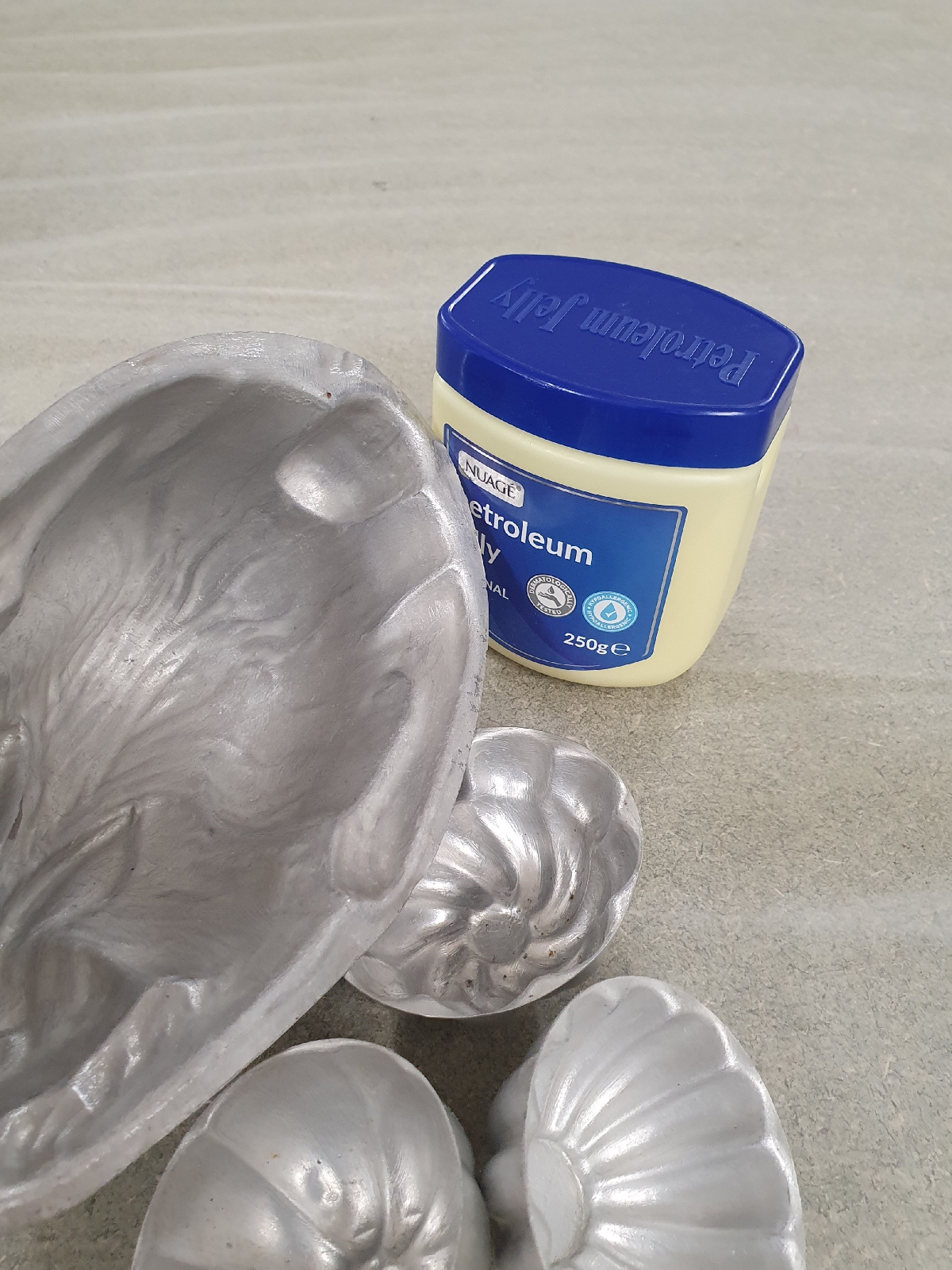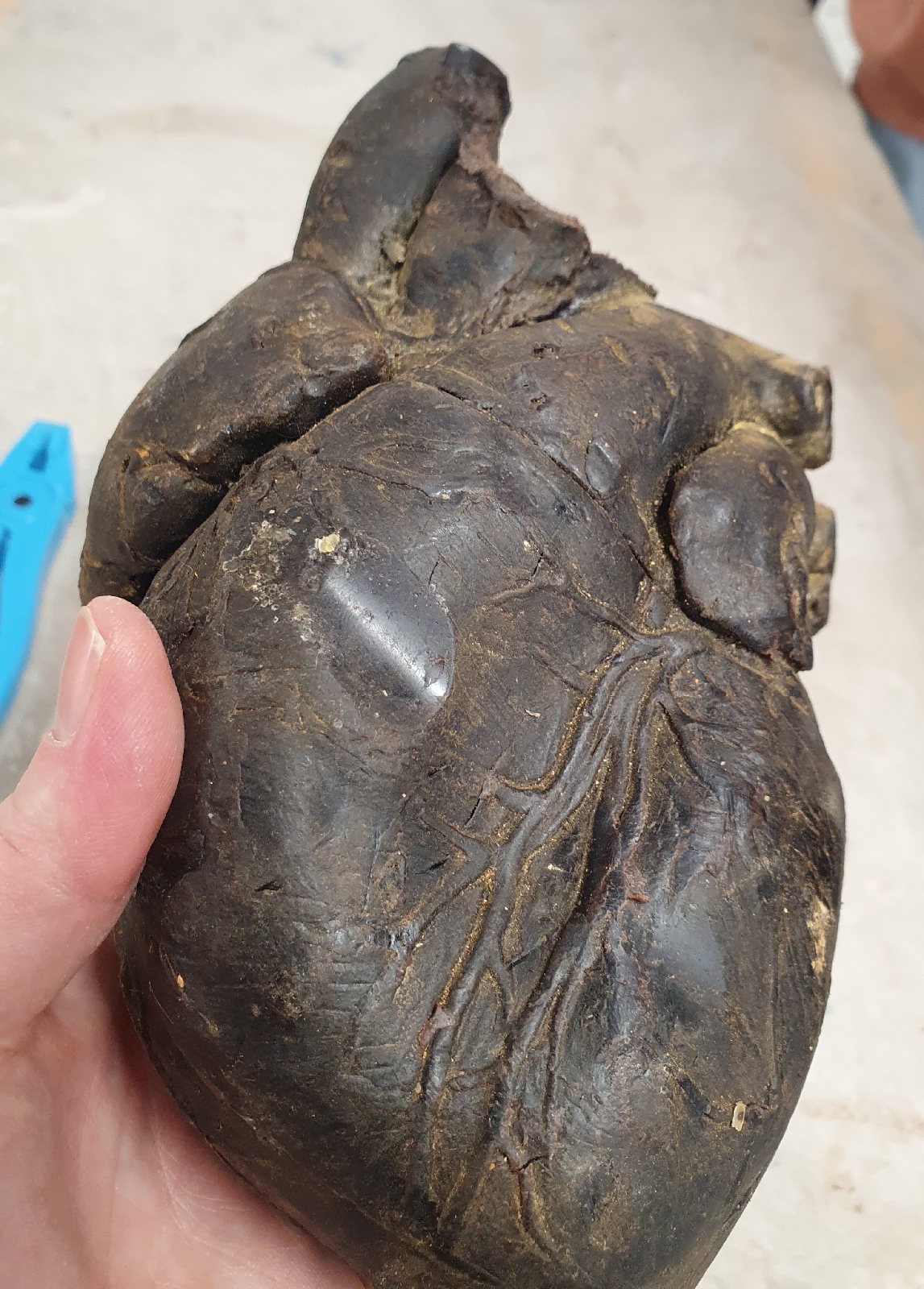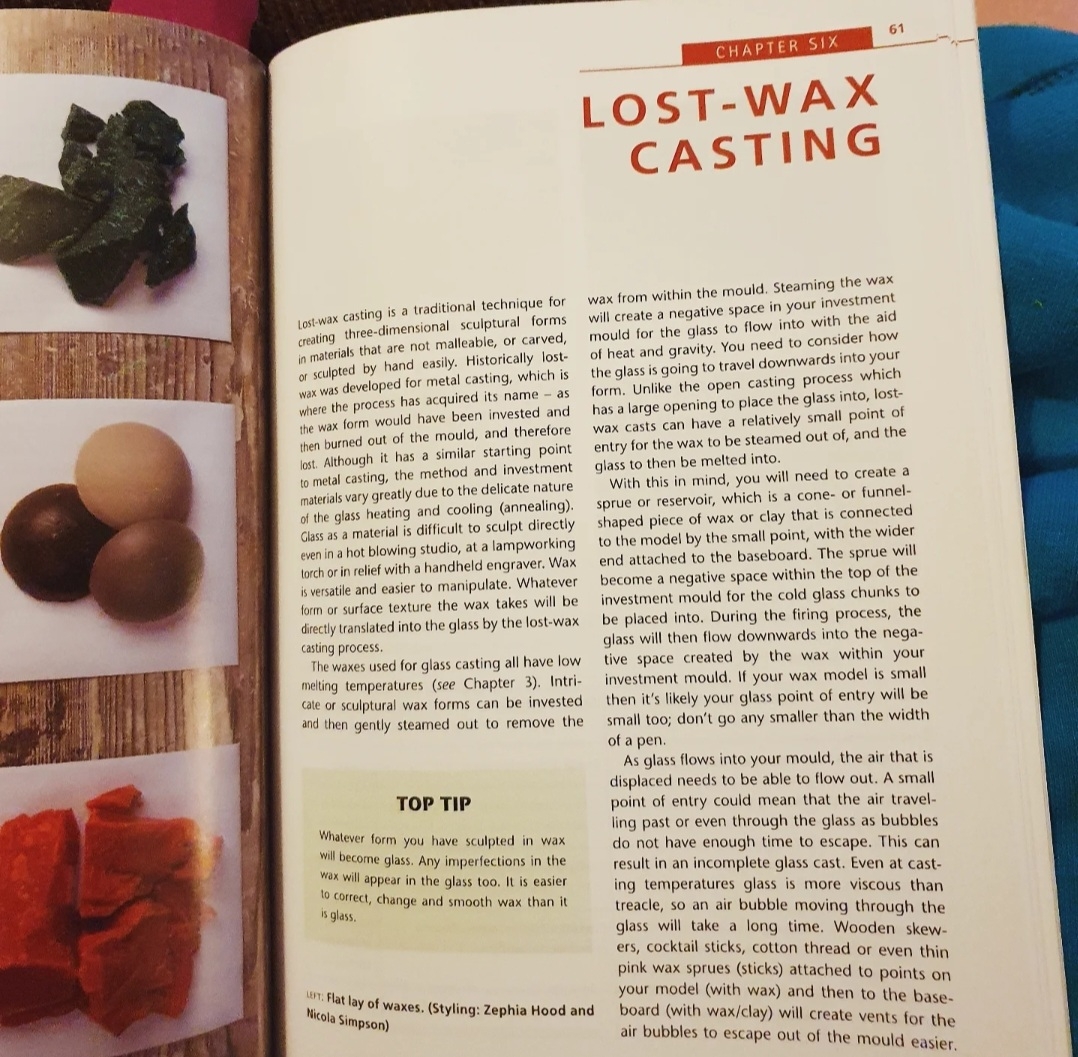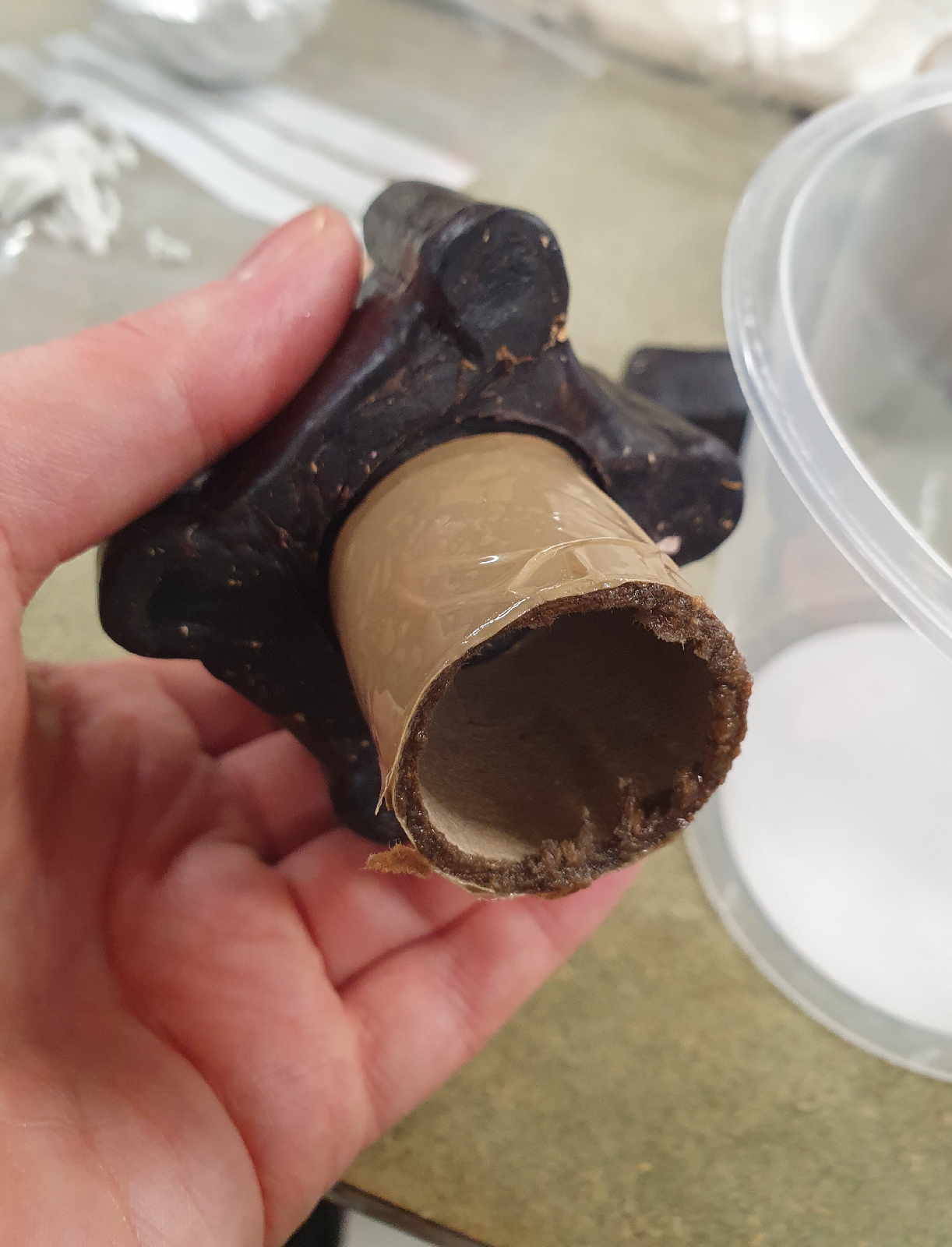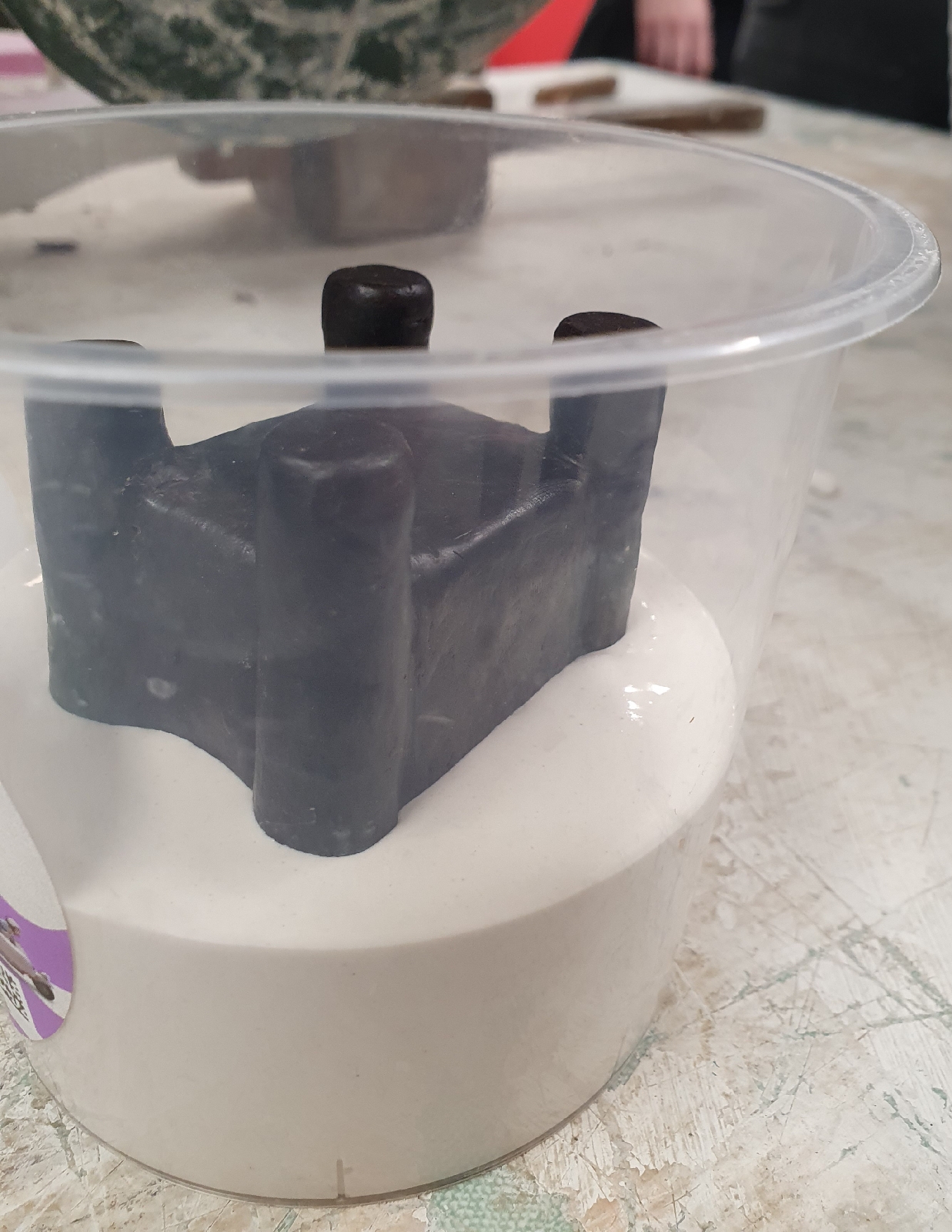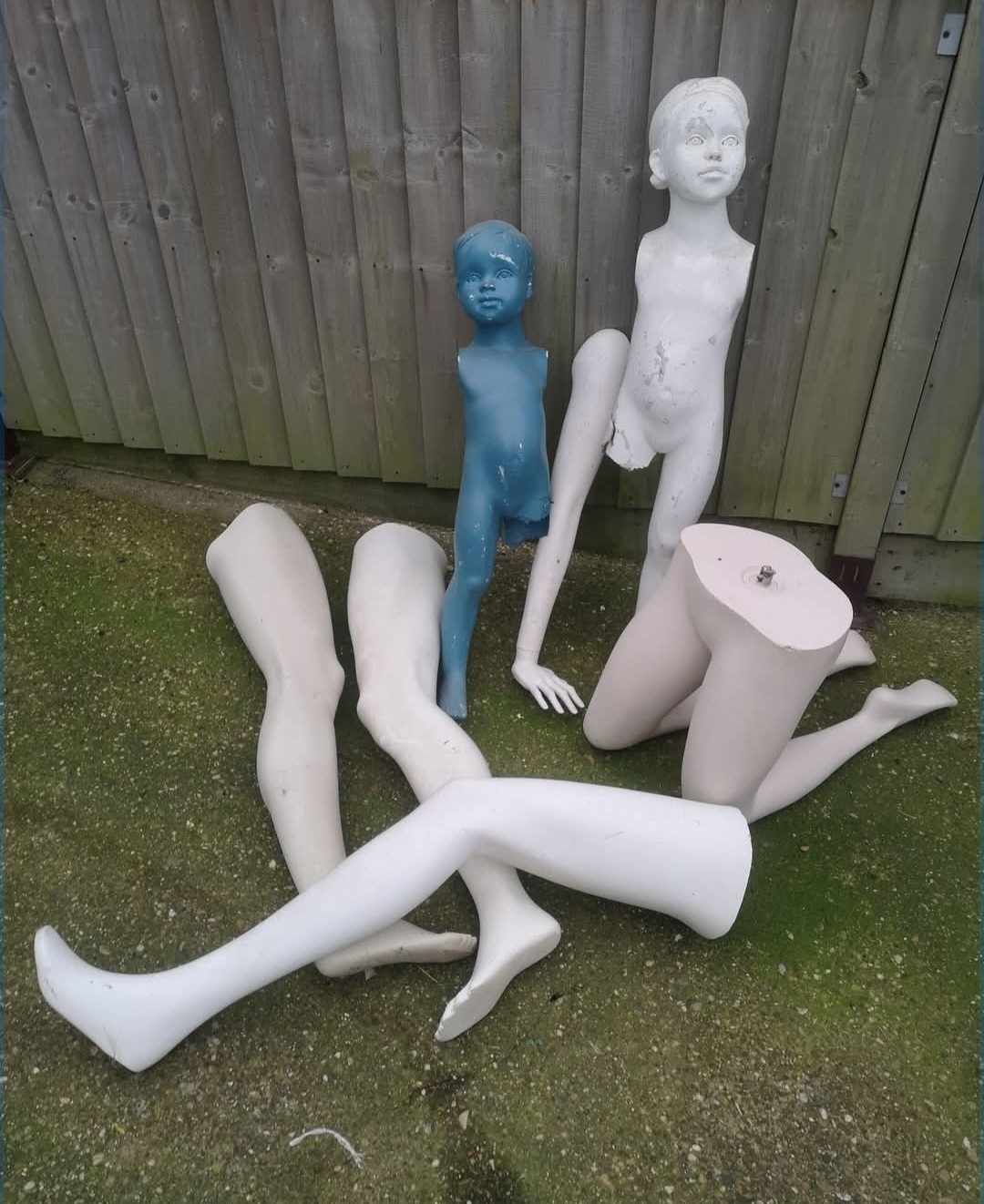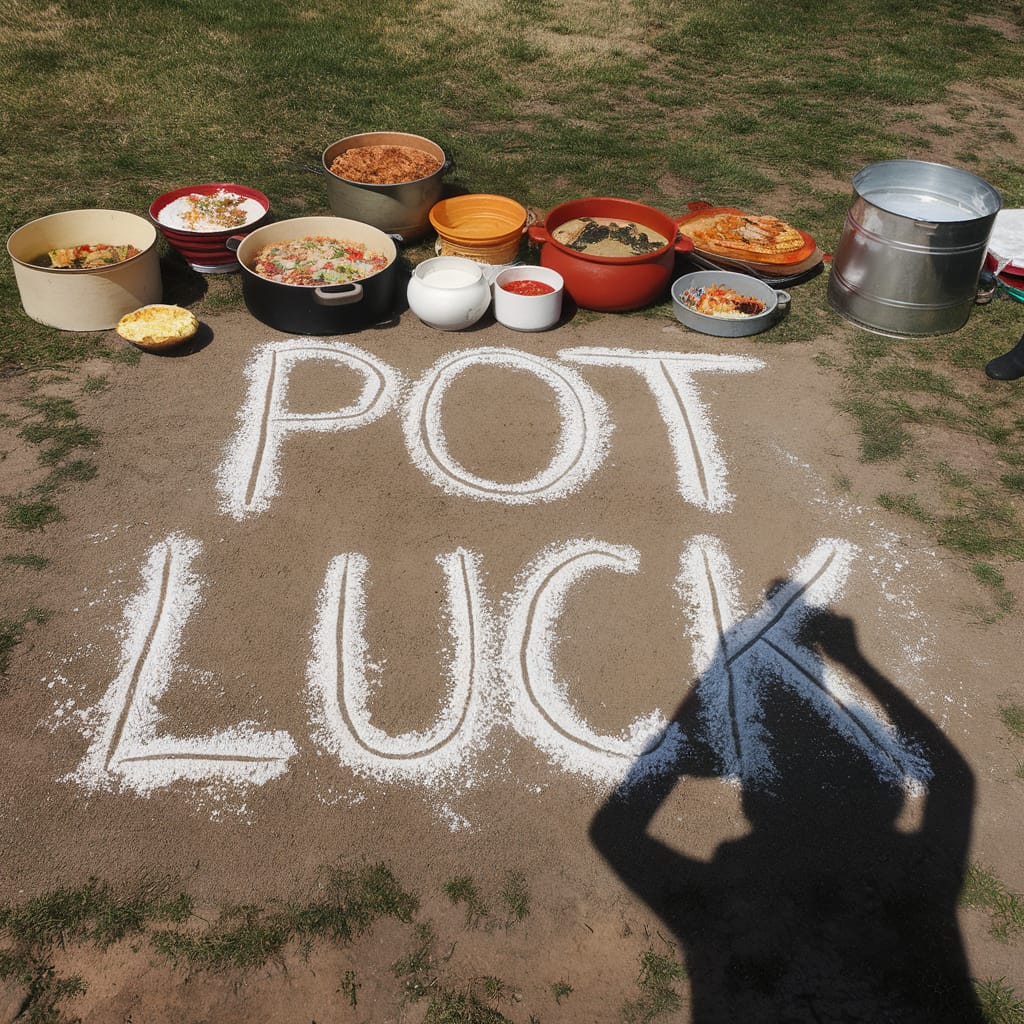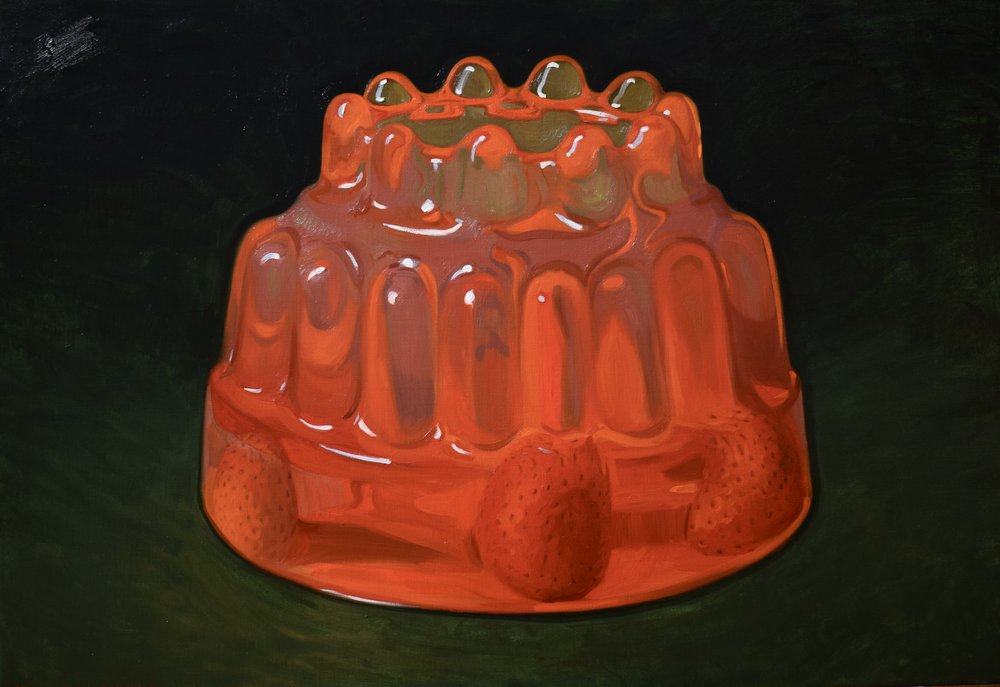Glass slumping is a glassworking technique that uses heat and gravity to shape glass into or over molds. A pane of glass, known as a billet, is balanced on top of the slump mold. As it’s fired, it melts to fill or cover the mold form. You do get folds where the glass overlaps, and it’s not an exact process, but it can be really effective and it’s the closest technique I have to hand to create an empty jelly mold form in glass.
I made a rabbit jelly slump mould by plaster casting some metal molds with the same plaster mix I used for the wax casting.
I applied a thin layer of Vaseline to the interior of the moulds as a resist to help me pop the plaster out once vaguely set. The trick is to apply an effective but thin layer so it does the job without losing any surface detail.
Despite the resist, the plaster was still really hard to remove, but it did eventually budge after a fair amount of percussive maintenance.
It was all worth it because the level of detail is brilliant.
There are some bubbles in the smaller pieces so I still need to refine my plaster cast technique. But overall I’m happy with my plaster casting resulting.
I am going to run some tests using the smaller jellie molds, to make sure that I set them up in the kiln the right way. When I’ve perfected the technique, I will slump cast the rabbit using a billet from the below shop:
